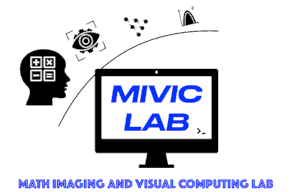| Title | Computer-aided assessment of regional abdominal fat with food residue removal in CT. |
| Publication Type | Journal Article |
| Year of Publication | 2013 |
| Authors | Makrogiannis, S, Caturegli, G, Davatzikos, C, Ferrucci, L |
| Journal | Acad Radiol |
| Volume | 20 |
| Pagination | 1413–1421 |
| Date Published | Nov |
| Abstract | Separate quantification of abdominal subcutaneous and visceral fat regions is essential to understand the role of regional adiposity as risk factor in epidemiological studies. Fat quantification is often based on computed tomography (CT) because fat density is distinct from other tissue densities in the abdomen. However, the presence of intestinal food residues with densities similar to fat may reduce fat quantification accuracy. We introduce an abdominal fat quantification method in CT with interest in food residue removal.Total fat was identified in the feature space of Hounsfield units and divided into subcutaneous and visceral components using model-based segmentation. Regions of food residues were identified and removed from visceral fat using a machine learning method integrating intensity, texture, and spatial information. Cost-weighting and bagging techniques were investigated to address class imbalance.We validated our automated food residue removal technique against semimanual quantifications. Our feature selection experiments indicated that joint intensity and texture features produce the highest classification accuracy at 95%. We explored generalization capability using k-fold cross-validation and receiver operating characteristic (ROC) analysis with variable k. Losses in accuracy and area under ROC curve between maximum and minimum k were limited to 0.1% and 0.3%. We validated tissue segmentation against reference semimanual delineations. The Dice similarity scores were as high as 93.1 for subcutaneous fat and 85.6 for visceral fat.Computer-aided regional abdominal fat quantification is a reliable computational tool for large-scale epidemiological studies. Our proposed intestinal food residue reduction scheme is an original contribution of this work. Validation experiments indicate very good accuracy and generalization capability. |
| URL | http://dx.doi.org/10.1016/j.acra.2013.08.007 |
| DOI | 10.1016/j.acra.2013.08.007 |
| PubMed ID | 24119354 |
Computer-aided assessment of regional abdominal fat with food residue removal in CT.
Submitted by admin on Fri, 01/24/2014 - 19:21
